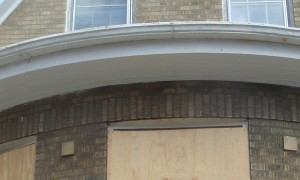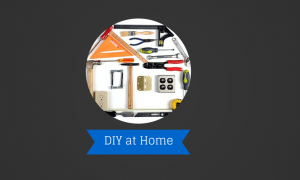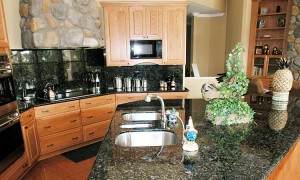Guest Post by Home Advisor
Congratulations! You’re embarking on an exciting, new adventure — owning your first home! As you get ready to sign the papers and start living in your new abode, it’s crucial that you don’t ignore some major missteps first-time homebuyers have made in the past. By taking prep steps ahead of time to avoid these common mistakes, you’ll be well on the way to settling into your new home for years to come.
#1 Ignore Over-the-Top Features
Sellers may have invested in some upgrades to make their home more appealing to potential buyers, including first-time homeowners. However, some major home upgrades might not be all that appealing after first glance. Swimming pools, for example, are high maintenance and expensive to repair, and they’re only functional for a few months out of the year, depending on where you live. Landscaping with multiple bushes, trees and various flower beds that require a lot of maintenance and care are another you don’t want to invest time and money in. There’s also a wine cellar — this sounds amazing at first glance, but there’s a lot of care and work that goes into its maintenance. Look for the features you know you’ll want to use and maintain before you look to sign any papers.
#2 Don’t Waive a Home Inspection
Never waive a home inspection. It may seem like a good way to cut costs in the home buying process, but spending $310 to $380 to hire a home inspector could save you from spending thousands later on major issues in the home. Home inspectors can reveal issues like:
- Roof leaks
- Exposed electrical wires
- Cracks in the foundation
- Plumbing leaks and cracks
- Problems in the heating and cooling system
- Holes in the interior or exterior walls
If these problems are discovered before you purchase the home, you might be able to compromise with the seller on fixing them ahead of the sale. If not, you might have to look for a different house to buy.
#3 Handle the Small Fixes
If you decide to move forward with a home that has a few problems, don’t underestimate the small fixes. For example, a leaking or running toilet might seem like a small problem, but it can become a major one if you aren’t careful. Running toilets not only waste gallons upon gallons of water, but they can also lead to bathroom flooding. Call a plumber to fix it as soon as possible. Also budget for other small problems like flooring, HVAC and roofing maintenance. These expenses can run up to $1,000 or $2,000 if not more, depending on the extent of the problem in some cases. So be sure to cushion your bank account.
#4 Understand That Some Projects Aren’t DIY
There are some new homeowner projects that are right for do-it-yourselfers. Painting, decorating, fixing some small holes in the wall with caulking — those are all affordable, easy and quick (if you follow instructions). However, there are some projects you should never attempt to do on your own. Call in a pro anytime you have a project that falls into one of these categories:
- Electrical
- Plumbing
- Structural
- Insulation
Projects like these are dangerous, and they require specific materials and safety equipment. Doing them on your own could lead to injury, if not more expensive repairs down the road. Beyond these, other home improvement projects are up to your best judgment to pursue as DIY or professional help projects. If you’re uncertain about how to approach any home project, call a professional for their opinion and a quote.
#5 Energy-Efficient Improvements
If you’re moving into your new home around the spring or summer, consider having a home energy auditor come out to find areas in which your energy efficiency may be improved. There are a lot of ways to cut down energy costs and help the environment. Some smaller improvements, for example, include:
- Weather-stripping your windows and doors
- Caulking around your exterior siding and filling any holes in your interior
- Replacing your windows with double- or triple-paned alternatives
- Laying new, thicker insulation to block cold air
- Replacing older appliances in the kitchen with energy-efficient alternatives
There are various additional home improvements that energy auditors may recommend after a thorough inspection. While this can be expensive, you can break it out over time so you can save money and budget.
#6 Attempting Remodeling Projects
Don’t attempt to remodel parts of the house less than a year after moving in. Settle in, get to know all the rooms in the house, and figure out which bothers you the most. This also gives you time to figure out your budget. A year is about the appropriate time to calculate your mortgage, utility bills and other costs that come with owning a home. If you attempt to spend money on a remodel within the first year, you could end up pulling more out of your bank account than you actually have at your disposal.
Andrea Davis is the editor at HomeAdvisor, which connects homeowners with home improvement professionals in their area for free. Connect with Andrea on Google+






